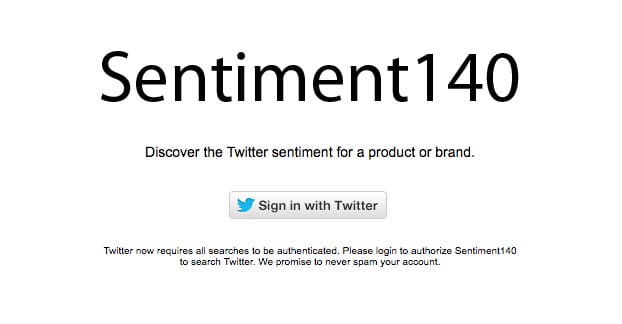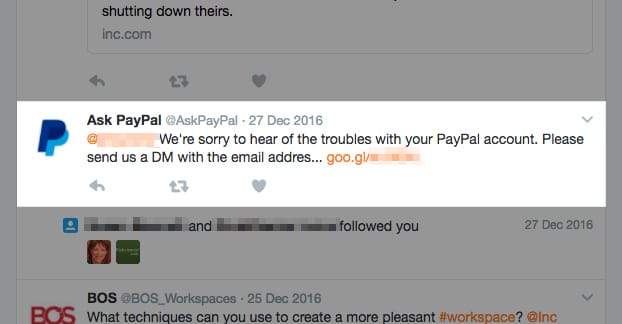Imagine this scenario. You’re a business using Twitter, and you have a few thousand followers. However, you’re finding it impossible to grow or expand, because every time you make a post, it’s endlessly retweeted with insults and “fix your service” and other complaints. You’re constantly the target of badmouthing. You’re stymied.
Imagine this scenario. You’re a moderately successful brand on Twitter, and you’ve been experiencing consistent growth over the course of the last year or two. Then you make one mistake, and become the laughingstock of the month. How do you find a path forward, outlive your mistake, and restore your reputation?
Imagine this scenario. You’re using Twitter and nothing is working. You don’t notice anything wrong. Your posts just don’t get engagement, you don’t get replies, and no one seems to want to talk to you. Are people talking behind your back?
All of these are situations where your reputation is hurting your brand and your growth potential. They’re all situation where having a reputation monitoring service active will help you head off problems or address them as they happen, and they’re all situations where you’ll be able to use the practice of reputation management to minimize the problem and start growing again.
Negativity Outweighs Positivity
One of the biggest problems reputation management on the internet is that negativity is far more common and is given far more weight than positivity. Think about it: if you see a product on Amazon with 10 reviews, five of which are five stars and five of which are 1 star, are you going to think it’s a good product or a bad product? The average is right in the middle, but you’re going to avoid the product, because it’s not considered “good” until it’s 4 stars or higher.
Part of the reason for this is the long history of fraud in reviews, both online and off. When someone you don’t know recommends a product to you, you have to ask yourself; are they doing it because they think the product is good and they think you’re interested in it? Probably not, right? They don’t know you, they don’t know your needs. It’s more likely that they’re selling it, they’re earning a commission off of the sales they refer, or they’re being paid to deliver the positive review.
The same goes for online reviews. Positive reviews can be valid, of course, but they might also be paid reviews, or fake reviews, or just not correct in some way or another. There are a million different ways a company can solicit positive reviews, even from people who haven’t bought the product. That’s why companies like Amazon and Newegg have instituted ways of flagging reviews from verified purchasers.
There’s another issue at hand as well. Take a look at your desk, your workstation, or wherever it is you are right now. How many of the items around you are satisfactory? How many of them live up to your expectations, work without fail, and are generally useful in your day to day life? Now, how many of those have you left positive reviews for?
On the other hand, when was the last time you got a product and found it broken, it didn’t work according to specifications, or it otherwise failed to live up to expectations? When that happened, did you go leave a negative review?
People are much more inclined to leave negative reviews than positive reviews, because they have drive to do so. Some people simply want to warn others away from possibly faulty products. Some people want to go the “public shaming” route to get faster customer service or possible refunds and discounts. And, of course, some people are trying to leave negative reviews for refunds even if the product worked just fine, they just want to pull one over on the company.
All of this stacks up to mean that negativity is very prevalent and is often given more weight than positivity online. It’s why a negative reputation on Twitter can carry forward, beget more negativity, and consistently hurt your brand.
Determining If Your Reputation Is Bad
Before you dig into reputation management, you should know that it’s not for the faint of heart. Serious reputation management is a lot of work, and it’s a lot like a diet. It becomes a lifestyle, it’s not something you can do once and walk away. Even repairing the damage of a single short faux pas can be time consuming or expensive, depending on the method you use.
So, before you try to manage your reputation, you should determine if your reputation is actually bad enough to warrant management in the first place.
There are three options you can take to check your reputation.
The first option is the low-level scan. Just do a Twitter search for your brand name and look at the kinds of content that comes up. Would you say that it’s more positive than negative? Would you say that it’s full of complaints, full of praise, generally neutral, or otherwise? It’s not scientific, but it can show you if something is coming up or if there’s a recent trend of some negativity.
You can also set up basic social alerts, to let you know when a new mention shows up that doesn’t have your account tagged. With no tag, you normally wouldn’t receive a notification, but using a third party app will show you either on its dashboard or via email. You have a lot of options here.
The second option is a more in-depth but still basic scan. Something like Sentiment140 will scan Twitter for your brand and will look at everything, including your tweets, your replies, your mentions, and untagged mentions. It will then use machine learning algorithms it has developed over time to figure out the sentiment – positive, neutral, or negative, and to what degree – of each tweet. It graphs them over time and shows you trends, as well as showing you individual tweets representative of the sentiment for all three categories. This one is a free app requiring Twitter authorization, but others may require a small monthly fee to use.
The third option is a more high-profile tool with a lot of analytics, both active and passive. These tend to cost money, but they also tend to come bundled with tools and advice that can help you fix your reputation rather than just watch it. One such example is the HootSuite Insights tool, which covers far more than just Twitter and is part of one of the most robust tools for brand management on the web. Pricing for HootSuite, of course, varies wildly depending on your needs.
Fixing Your Reputation
Once you’ve chosen a tool and put it to use, you’ll see if you have a negative reputation. If you do, well, it’s time to spring into action. And by “spring into action” I mean “carefully consider your options before you do something to make it worse.”
In other words, figure out exactly what went wrong before you try to refute a point, make a response, or post a correction. Otherwise you might end up like the Washington Post Express recently, which used the wrong symbol on a magazine cover, then made a typo in the correction tweet, and then made another typo in another response.
Step 0: Determine time sensitivity. If it’s a recent mistake, like a tweet you made an hour ago, you may want to respond as quickly as possible to take care of the issue. If it’s an ongoing issue, like a product with a persistent and unaddressed problem, you’ll have more time in which to address it. Don’t jump to action and forsake thinking about consequences, but don’t put it off too long if it needs attention now.
One thing to note is that, once posted on Twitter, your tweet is there forever. Sure, you can delete it, but someone, somewhere will have taken a screenshot. It’s such a common thing these days for companies to think they can delete a tweet and pretend it never happened that people are more than happy to preemptively call you out on it.
Step 1: Analyze the root cause of the problem. As I said, it’s either something you did recently, or it’s something that has been building for a long time. This will be pretty easy to determine based on the content of the negative tweets. If they’re all posting screenshots of something you did and calling you out, well, it’s time to get cracking and address that specific incident. If it’s a lot of general “Company X sucks!” tweets, you might be a major telecom or ISP in the United States.
Once you have determined the cause of the problem, you can start to work out a solution.
Step 2: Address individual issues, if possible. Individual issues can range from a single mistaken tweet to individual customer complaints. Make an apology tweet and get down to solving the problem. The Washington Post, for example, made up a replacement cover. It didn’t do them much good since they had already gone to print with the wrong one, but it was a step in the right direction.
In terms of individual customer issues, well, that’s where taking advantage of the new Twitter customer service options comes into play. In addition to responding to and creating a chain of conversation with disgruntled customers, you need to actually address their issues and work to solve them. This is the basis of customer service, and should be pretty easy to direct.
Step 3: Address broader issues, if possible. If you have a common problem with a product or piece of software, it’s something you can invest development time into fixing. Announce that you’re working on a solution, and try to make that solution available to as many affected users as possible. You don’t want to make your “solution” a full-priced replacement product, for example. You want to make it a patch or a free replacement, to make your customers turn their negative experience into a positive one. Always look at your potential solution and determine whether or not it will only make things worse.
As one giant spitball of an example, imagine if a company like Comcast wanted to get their act together. Something they could do would be initiate a company-wide initiative to figure out where problems lie, what they are, and how to solve them. They can announce this in earnest and then approach every negative review or comment they get with a “please tell us more, we’re looking into fixing these issues.” They would get comments about their policies, their politics, their infrastructure, their pricing, and basically every other aspect of their company. Some of these they could solve, with enough investment, and they could make a lot of people happy.
Of course, a company like Comcast would never do such a thing, because they’re far too big to fail to a bad reputation, and they have enough of a monopoly as to make it impossible to choose another service.
Step 4: Announce that you’ve acknowledged the problem and are taking steps to solve it. This is crucial for lengthy or in-depth problems. Simply working on a solution isn’t enough; the first part of reputation management is heading it off before it gets any worse. By announcing that you’re working on a solution, you give people hope, and you convince new commenters that they might want to hold off on their criticism.
Step 5: Live up to your word and actually solve the problem. Like, obviously. If you promise a solution and fail to live up to it, you’re going nowhere and your reputation will just get worse.
Off-Twitter Reputation Management
There’s a lot more to reputation management than just Twitter. There are a lot of techniques, such as reporting and burying negative reviews as fake when it’s plausible, and producing positive content to out-SEO negative reviews. However, since the focus of this post was on Twitter, I’m not going to cover it here. Just know that if you have an issue on Twitter, you probably have an issue around the web, and it’s a good idea to try to solve it everywhere as comprehensively as possible.







